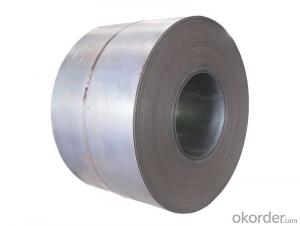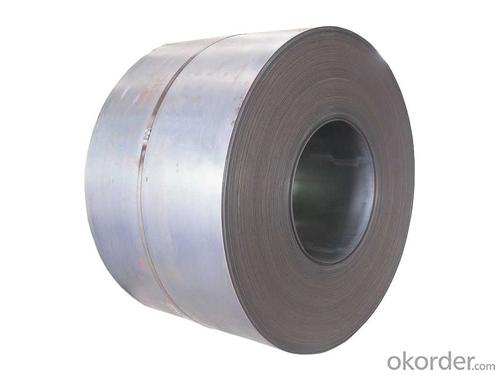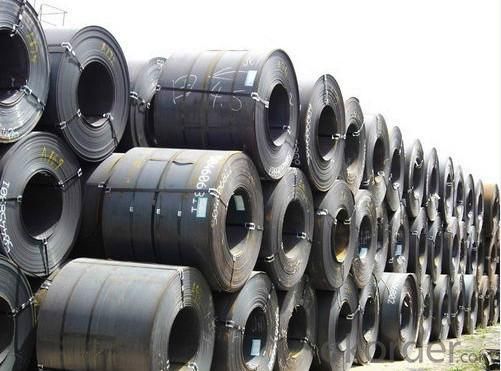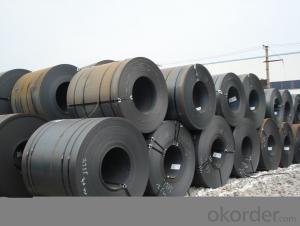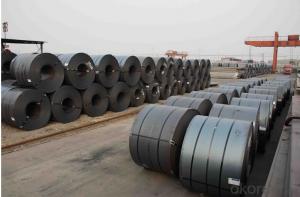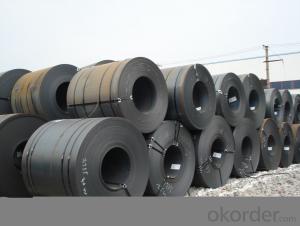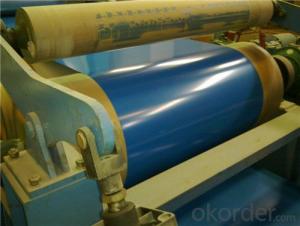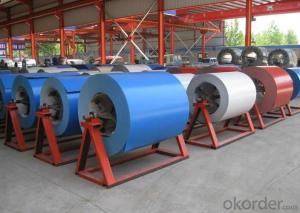Hot Rolled Steel Coils /Sheets
- Loading Port:
- China Main Port
- Payment Terms:
- TT OR LC
- Min Order Qty:
- -
- Supply Capability:
- -
OKorder Service Pledge
OKorder Financial Service
You Might Also Like
Product: | Hot Rolled Steel Coils/Sheets |
Material: | Q195,Q235,A36,SS400,S235JR,Q345,ST37-2, CCSB etc |
Standard : | JIS G3002 GB/T251B |
Technique: | hot rolled |
Thickness | 1.2mm to 200mm |
Tolerance of thickness: | :+/-0.03mm |
Width: | 750mm-2000mm |
Tolerance of width: | :+/-5.00mm (aiming to +/-2.00mm) |
Normal width: | 914mm, 1000mm, 1200mm, 1219mm, 1250mm,1500mm |
Length: | According to requirement |
Coil ID: | 508mm-610mm |
Coil Weight: | 10-25 Metric Tons |
Surface: | Black, Chromate, fingerprint resistant treatment, slight oiled or non-oiled, dry |
Port of Loading: | Tianjin/Shanghai port |
Packaging Details: | Standard export packing or according to the clients required |
Delivery Time | Within 30 days after received 30% deposit or workable L/C |
Payment Terms: | L/C,T/T |
|
|
- Q: So what's harder gold or steel
- steel. gold is pretty soft.
- Q: What is the standard length of steel coils?
- The standard length of steel coils can vary depending on the specific industry and application. However, common standard lengths range from 1000 to 6000 millimeters or 3 to 20 feet.
- Q: 2 refridgerator of similar model and same brand..one is stainless steel...the other is clear steel (cheaper)..so wat's the difference between the two?
- Stainless steel is different than regular (clear?) steel because is is an alloy, or combination, of steel and other elements. Stainles steel has 15% chromium, which is very resistant to rust than regular steel. That is why stainless is more expensive
- Q: What are the different methods of oiling steel coils?
- There exist multiple techniques for oiling steel coils, each possessing unique benefits and applications. Some commonly employed methods are as follows: 1. Immersion or bath oiling: This technique entails immersing the steel coils in an oil bath, typically passing them through a series of rollers to ensure an even and complete coating. Bath oiling is a cost-effective and efficient method for large-scale production as it allows for simultaneous oiling of multiple coils. It is commonly utilized for hot-rolled coils. 2. Roll-on oiling: As suggested by the name, roll-on oiling involves applying oil to the surface of steel coils using rotating rollers. This approach guarantees uniform oil distribution and is suitable for both cold-rolled and hot-rolled coils. Roll-on oiling is often preferred when precise control over the amount of oil applied is necessary. 3. Spray oiling: Spray oiling involves applying a fine mist or spray of oil to the coils using specialized nozzles or sprayers. This method allows for targeted application, making it suitable for specific areas or sections of the steel coils. Spray oiling is commonly employed for precision or specialty coils where controlling the oil quantity is crucial. 4. Electrostatic oiling: Electrostatic oiling entails applying a charged mist of oil particles to the steel coils. The coils are given an opposite charge, causing the oil particles to be attracted and adhere to the surface. This method ensures an even and controlled distribution of oil, minimizing waste, and reducing environmental impact. Electrostatic oiling is commonly used for high-quality or high-precision applications. 5. Brush or roller oiling: This technique involves manually applying oil to the coils using brushes or rollers. It is typically utilized for smaller-scale operations or when precision is required in specific areas. Brush or roller oiling allows for close control over the amount of oil applied. The selection of the oiling method depends on various factors, including the type of steel, desired level of oil coverage, production volume, and cost considerations. Each method possesses its own advantages and limitations, and manufacturers often choose the most suitable technique based on their specific requirements and objectives.
- Q: How long do steel coils last?
- The lifespan of steel coils can vary depending on various factors such as the quality of the steel, the conditions in which they are stored or used, and the specific application for which they are being used. Generally, high-quality steel coils can last for several years to several decades before showing signs of deterioration or wear. However, it is important to note that steel coils can be susceptible to corrosion if not properly maintained or protected from moisture or harsh environmental conditions. Therefore, regular inspection, maintenance, and appropriate storage or usage practices are crucial in maximizing the lifespan of steel coils.
- Q: How do steel coils impact the overall cost of production?
- Steel coils can have a significant impact on the overall cost of production. The cost of steel coils is a major component in the production process, as they are used as raw materials in various industries such as automotive, construction, and manufacturing. Fluctuations in the price of steel coils can directly affect the cost of production, ultimately influencing the final price of the end product. Additionally, factors such as transportation and storage costs also contribute to the overall impact of steel coils on production costs.
- Q: How are steel coils used in the production of rail tracks?
- Steel coils are used in the production of rail tracks as they are processed and shaped into long sections known as rails. These coils are first uncoiled and then heated, allowing them to be rolled and formed into the desired rail shape. The resulting rails are then cut to the required length and undergo further processes such as straightening and finishing to ensure their strength, durability, and suitability for use in railways.
- Q: is surgical steel or sterling silver belly button rings better for you? surgical is really cheap so its sketch and i justt dont want it to mess up
- Implant grade surgical steel is best. Surgical steel is not cheap. You must be looking at something else. And sterling silver shouldn't really be worn in piercings anyway. Have you ever cared for actual silverware or platters or anything? Notice the brownish film it gets on it? That's from oxidation....do you really want that to happen inside your piercing? That's bad news man.
- Q: What are the different coil winding methods used for steel coils?
- The different coil winding methods used for steel coils include cross-winding, helical winding, and layer winding. Cross-winding involves winding the steel coil in a crisscross pattern to ensure even distribution of the material. Helical winding involves winding the steel coil in a spiral pattern, which provides strength and stability to the coil. Layer winding involves winding the steel coil in layers, with each layer placed on top of the previous one, ensuring efficient use of space and easy unwinding of the coil.
- Q: What are the different types of steel coil handling devices?
- There are various types of steel coil handling devices, including coil lifters, coil tongs, coil hooks, coil grabs, and coil carriages.
Send your message to us
Hot Rolled Steel Coils /Sheets
- Loading Port:
- China Main Port
- Payment Terms:
- TT OR LC
- Min Order Qty:
- -
- Supply Capability:
- -
OKorder Service Pledge
OKorder Financial Service
Similar products
Hot products
Hot Searches
Related keywords
